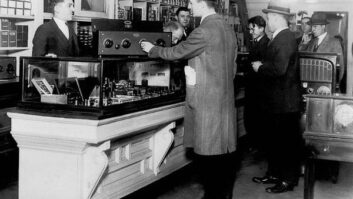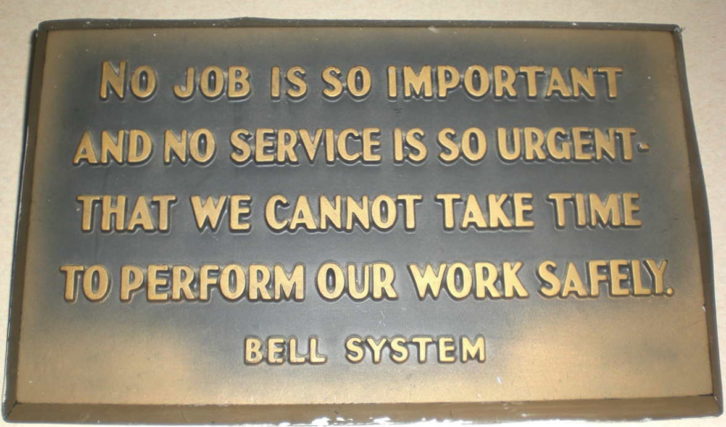
In a September Workbench column, we talked about those big and beefy Klein 9-inch Journeyman’s Pliers and named them a “must-have” for electrical work (not to mention occasional self-defense).
Wayne Eckert of Rural Communications Cooperative in Florida uses “9s” and sent in a couple of tips.
First, when removing knockouts from an electrical or panel box, most people use a screwdriver, hammer and a pair of 9s. But there is a simpler way to do the job. Take the 9s and, from the back of the box, hard-slam the tip of the pliers on the knockout (KO), opposite of where it is attached to the box. This will bend the KO into the box. Then on the inside of the box, grab the KO and twist it loose.
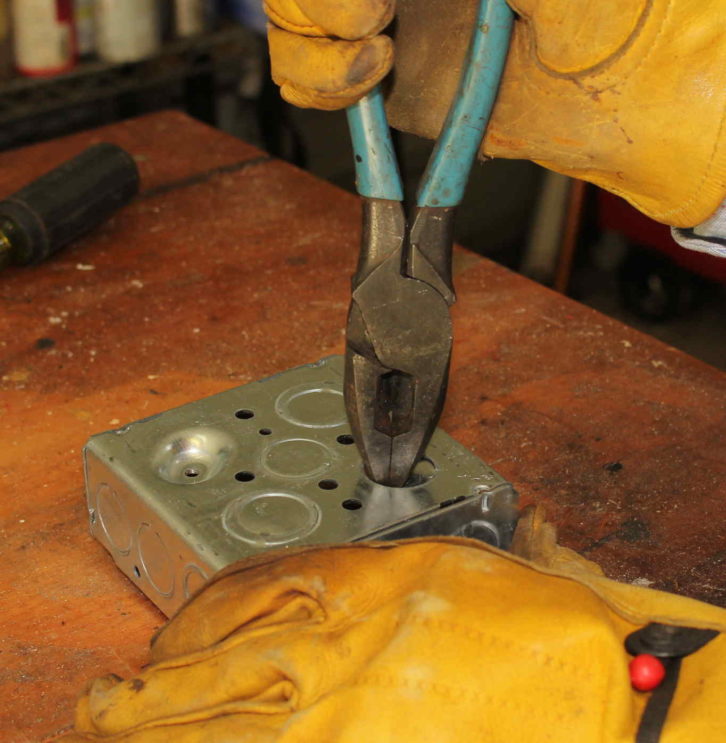
But where the 9s really come in handy is when you’re pulling conductors or cable.
Anyone who has pulled a fish or mule tape will tell you that, even if you’re wearing gloves, the job can be a real pain in the hands. It isn’t easier when the tape is covered in wire-pulling lubricant (aka snake snot).
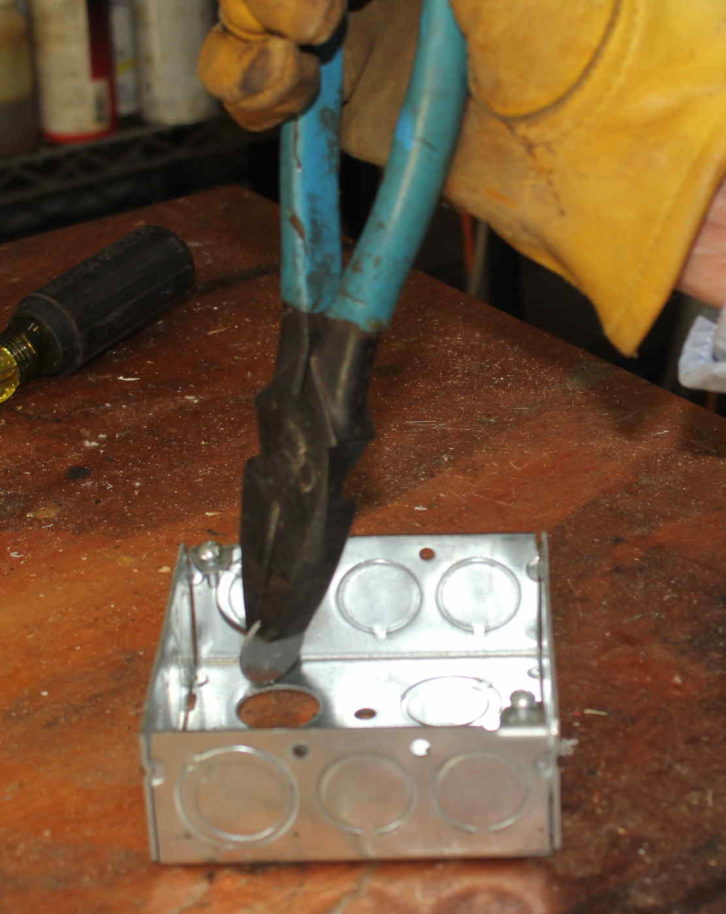
Well, try grabbing the fish tape using the gap between the handles of the 9s, just below the hinge. That space was designed to clamp a standard 1/8-inch fish tape. Now both hands can be used to pull the tape, with no chance of it slipping or hurting one’s hands.
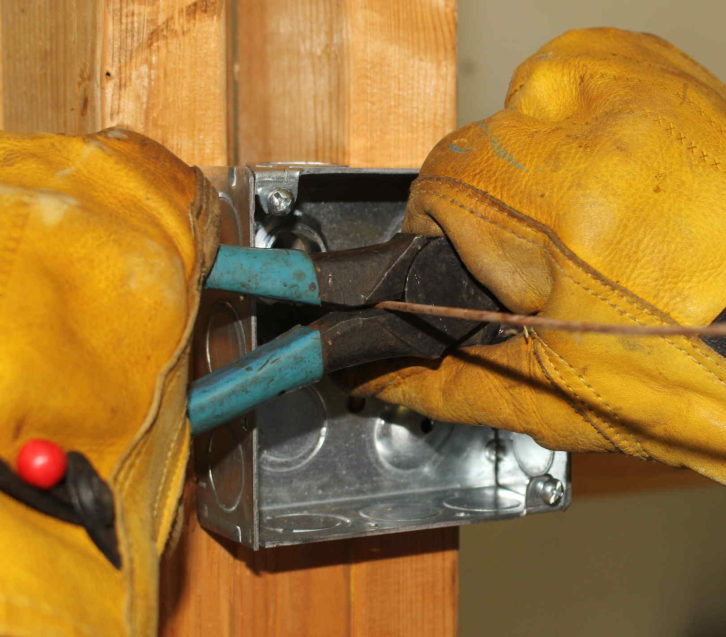
Working with a mule tape? Simply bring the tape through the same gap and wrap it around the 9s a few times, then pull. Again the procedure makes it a lot easier to pull and prevents injury to one’s hands.
Wayne adds that your 9s can also be used with a screwdriver to tighten conduit connector lock nuts. This is indeed a versatile tool.
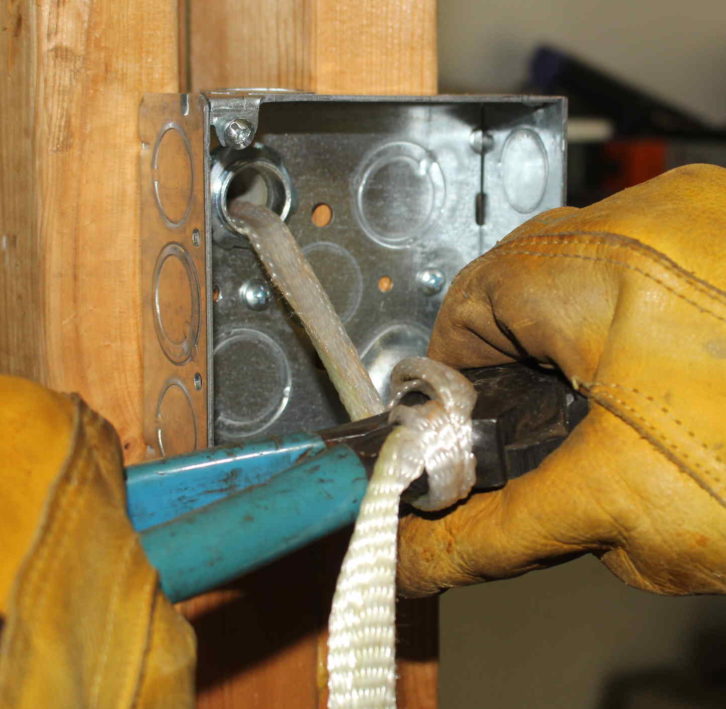
You’ll notice in Wayne’s pictures that he’s wearing gloves. Working safe and smart assures that you’ll go home uninjured — the best part of the workday. Wayne also included a photo of the old Bell System safety motto. Be safe, readers!
IEC what you mean
Lou Schneider, who was “the transmitter guy” at Santa Monica College’s KCRW(FM) before retiring, saw our recent discussions about using one-foot extension power cords to solve wall-wart crowding.
He points out that some of these cords are terminated in an IEC connector rather than a standard three-prong extension cord plug. You can’t plug a wall-wart into an IEC connector, so be sure to search for “three-prong 1-foot extension cords” in the Amazon search block.
What’s the emoji for “full tank”?
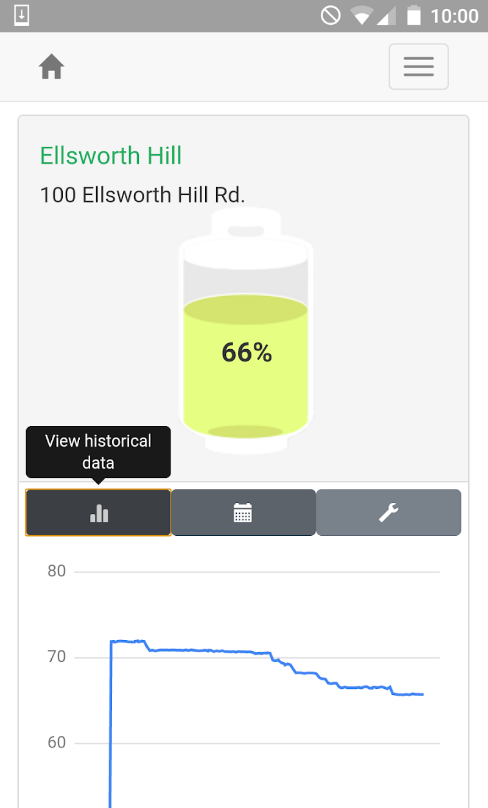
Aaron Shultz is the IT director and assistant engineer at The Joy FM and its parent the Radio Training Network in Sarasota, Fla.
In a recent SBE webinar and a subsequent Radio World article about hurricane preparedness, Aaron was quoted saying he uses a product called Tank Utility to monitor propane generator fuel consumption and fuel on hand at all of his tower sites. The app updates periodically to a centralized web manager. You can find out more here.
Reminder
Have you thought about those three “Must Check” items when you visit a transmitter site? We’re accepting suggestions and will be awarding some useful prizes for the best entries. Email your suggestions to [email protected].
[Read Another Workbench by John Bisset]
Have mercy!
We can depend on consultant Frank Hertel, principal engineer with Newman-Kees RF Measurement & Engineering, to come up with memorable website links. For a lot of readers, his next one will take you back in time.
Frank didn’t have a transistor radio until he was in the 8th grade. Prior to that, he used a crystal radio set. In fact he built many of them.
His final version drove a 4-inch speaker slightly more than a whisper. At night, Frank could connect a crystal headphone in place of the speaker, and tune to the high end of the AM band to hear — very faintly — XERF, the 250 kW flamethrower transmitting from Mexico across the Texas border.
Perhaps you started your own broadcasting journey with a crystal radio set? If so, you will enjoy an article at the website Nuts and Volts called “Remembering the Crystal Radio.” Find it here. And if you remember XERF, Frank shares a link to a YouTube remembrance video of XERF resurrected. It’s here or at YouTube search “XERF: A Blast From The Past.”
Don’t forget to tip! Workbench submissions qualify for SBE recertification credit and can be emailed to [email protected].











